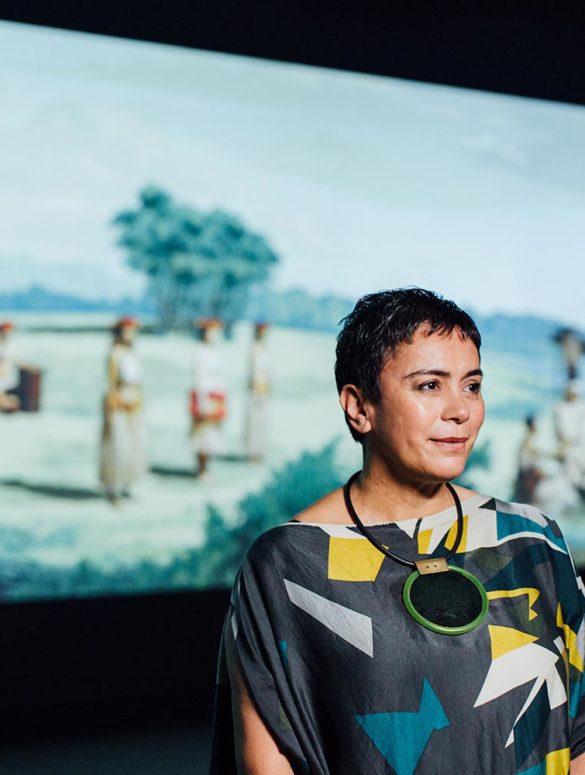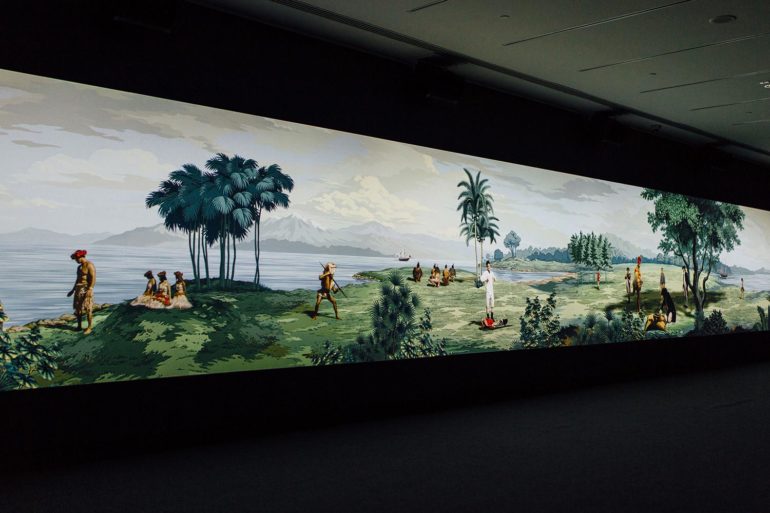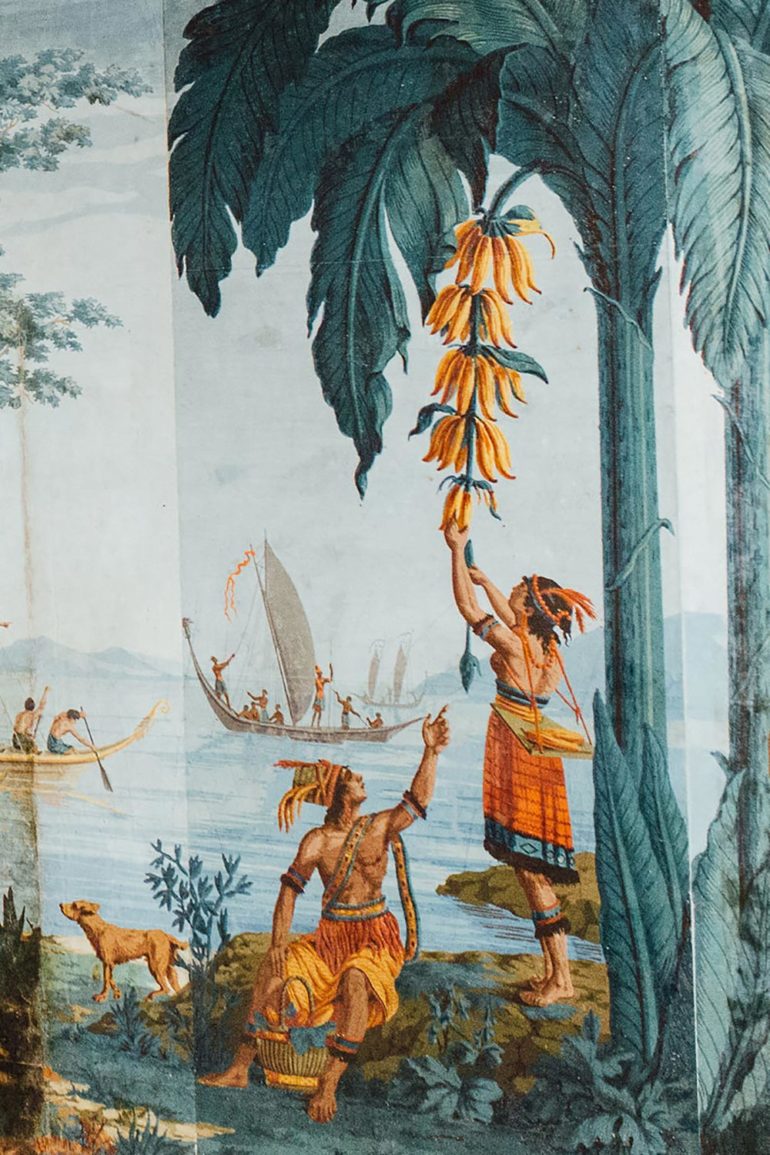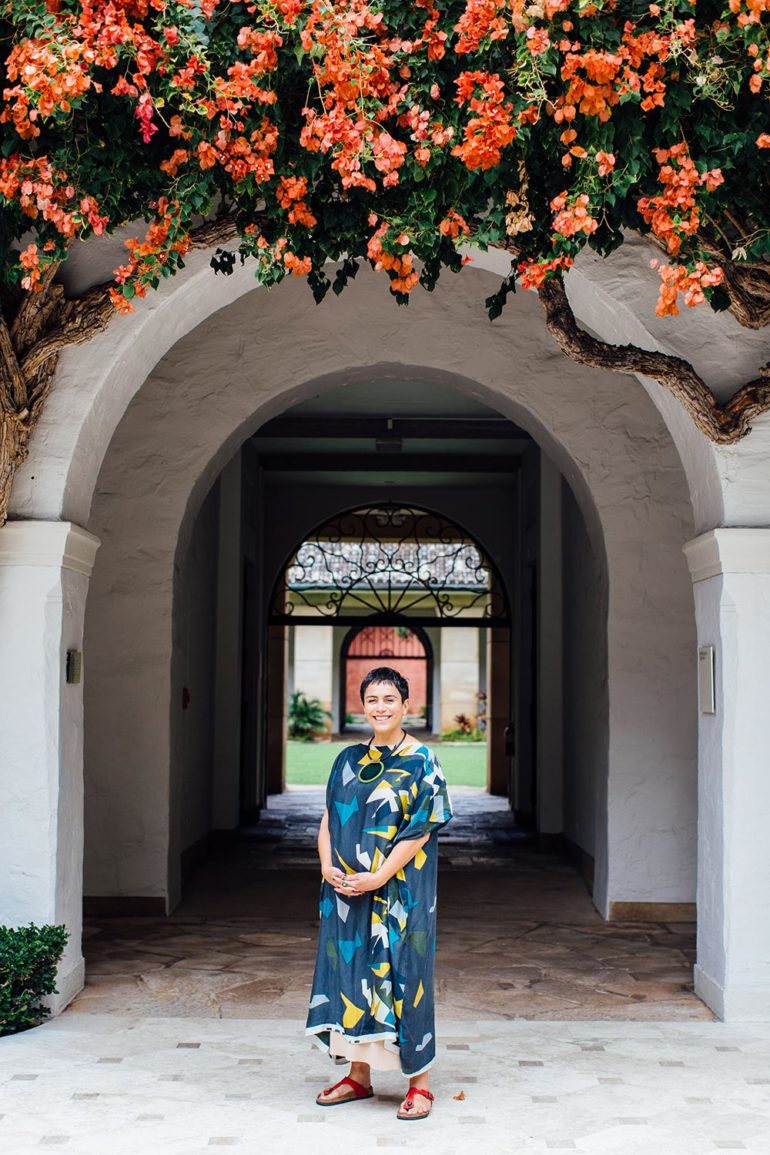I may not have seen a more impressive (and inarguably immersive) piece of art in 2019 than Lisa Reihana’s Emissaries—specifically, “in Pursuit of Venus [infected],” an epic 64-minute panoramic video installation exhibited at the Honolulu Museum of Art with support from ‘Alohilani Resort. Inspired by the 19th-century French wallpaper “Les Sauvages de la Mer Pacifique” by textile designer Jean Gabriel Charvet, the installation presents an expansive and animated narrative that challenges the wallpaper’s colonial depictions, exploiting modern-day cinematic advances with marvelous result.
What depictions in the Charvet painting initially startled you? What parts of it did you take most issue with?
What Charvet has depicted comes from versions of versions of versions of versions of the truth. That was the place I felt from which I could create work and talk back into that space, really thinking about presenting the imagery and the ceremonies that we perform.
We’re not a dying race. We are survivors. We are the embodiments of our ancestors and the philosophies and ideas that flourished from that time.
Can you talk about how you approached casting this project and the people you included?
The wallpaper has been a way of inviting lots of people in. For instance, I went to Australia and got permission to tell stories from some of the elders there. It was really about agreed representation.
Also, I knew I wanted to depict artists. I’m really interested in the illustrators of the time because of the impact their work has had on how we think of ourselves today and how we looked at those points in time.
The source material being a wallpaper is so intriguing to me—this visual product of an image plastered over an existing material to fashion another landscape altogether. How did that shape and inform the piece?
The illustrator who made the wallpaper went to Guadalupe but never came into the Pacific, so some of the palms and things are not actually correct. When I was making this work, I had this possibility to remake everything and set the record straight, but I decided I wanted to keep a sense of authenticity to the thing that I’m resisting.
Also, because it’s a green screen, I couldn’t use green greenery. So it’s very much a confabulation that’s made for the particularities of the digital technology that we built and created for this work. It is this completely made-up platform that doesn’t actually belong or represent anywhere specifically.
What that does for me, and the way I’m thinking about it, comes from a scholar, Deidre Brown. She thought it was very interesting that, because it belongs to no one, it can be everyone’s. Every voice can stand here in this work and speak across it.
There’s an undeniable electricity that energizes the exhibition space. What mood were you aiming for and what did you want to leave the viewer with?
When I started making this work, my initial feeling was to really make people rethink what they think of the Pacific. People come here seeing it as this exotic place, but there are histories embedded in the land and people.
The piece uses a very new cinematic language—it’s a bit like theater. The editing comes about in how you view it. It’s your choice to look at one scene or another. Because it scrolls around you, there’s this sense of a series of unfolding worlds and new stories to come. It’s full of wonder, and people don’t quite know what it is they’ve come to encounter. They need to spend time with it to unpack it.
With digital technologies and devices and social media, it’s very hard to make people stop and feel that sense of wonder and come to their own conclusions about whatever it is they’re seeing. There are scenes in this work that an indigenous person will read really differently than someone with a Western perspective. There are two different truths operating in the same space and time, and that is true of life.
Hopefully, in taking the time to view the piece, you can come to empathize and see things from multiple perspectives.






